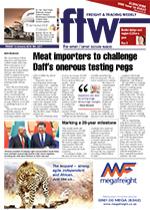A transport management solution (TMS) in the form of electronic proof of delivery (POD) and driver dispatcher has ramped up efficiency for manufacturer Freddy Hirsch. According to Renko Bergh of Forte Supply Chain Consulting, which co-project managed the implementation, a TMS remains one of the best supply chain applications when it comes to managing costs and driving value. “We were approached by the Freddy Hirsch Group to assist with the implementation of a TMS,” he told FTW. “The company had opted to use an owner driver model for a segment of their deliveries and were looking for a system to manage their transport orders while at the same time introducing a paperless system for delivery notes and freight documentation.” Dave Hallett, GM of operations for Freddy Hirsch, said the strategy for the logistics operations was to increase usage of owner drivers to drive savings, support enterprise development and improve customer service. “However, as this owner driver network increased, it became increasingly complex to manage the network and ensure the most efficient delivery routes were being used. In addition, the admin element increased, in particular the management of delivery costs and the processing of PODs and returns.” With the group moving towards online ordering and customer expectations set for online tracking of order and delivery status, change was necessary. Forte Transport Solution introduced software partner Nimbus for this project, with the first implemented site being the Western Cape. From here the solution, once established, will be rolled out across the country to the remaining Freddy Hirsch distribution sites. “Drivers are all kitted out with hand-held devices and the entire system is fluid, integrates with the current financial enterprise resource programme (ERP) and provides a utilisation dashboard on order distribution,” said Bergh. “The introduction of driver safety checklists on the hand-held device has also provided benefit. The improved document management and tracking of POD enquiries has had an impact on the effectiveness of invoice cycles.” Knowing where delivery vehicles had been and were going in real time was vital to being able to communicate appropriately, said Hallett. “It also allows us to reroute vehicles to address a pressing need. Our success is wholly dependent on our customer’s success and their success relies on having product available when they need it,” he said.
INSERT
Drivers are all kitted out with hand-held devices and the entire system is fluid. – Renko Bergh

